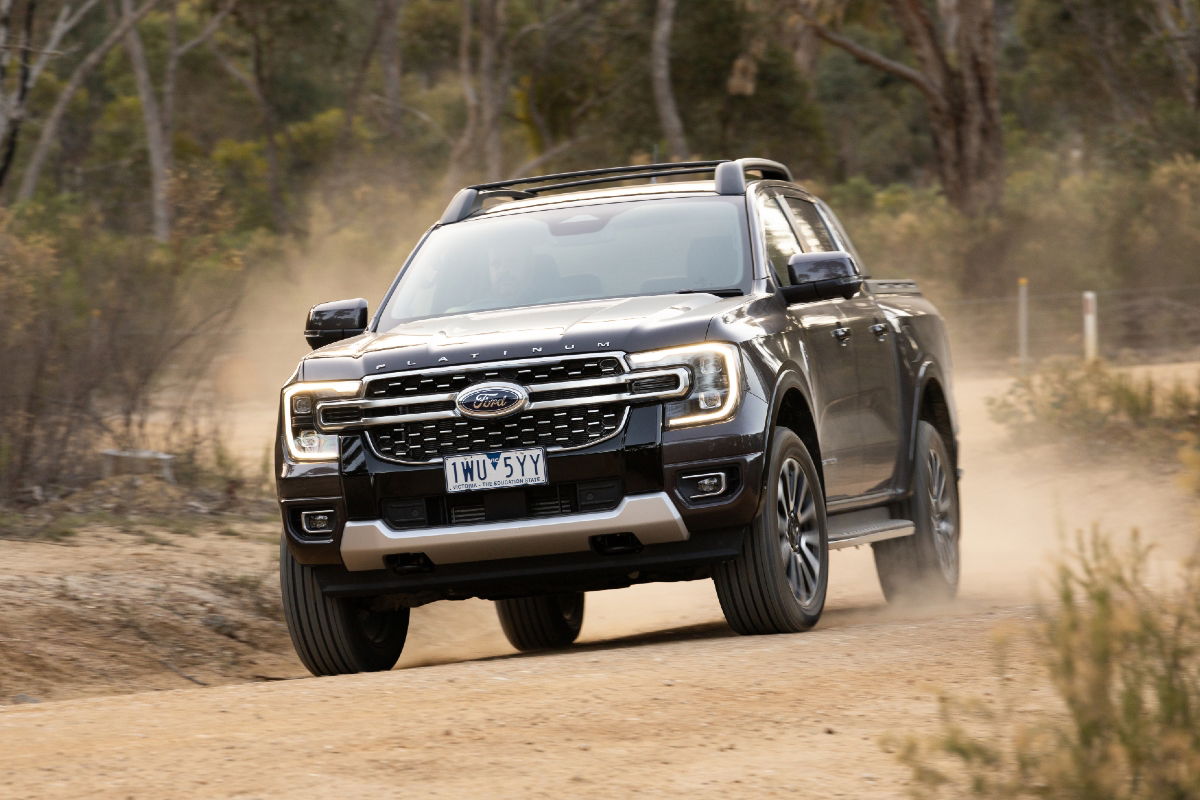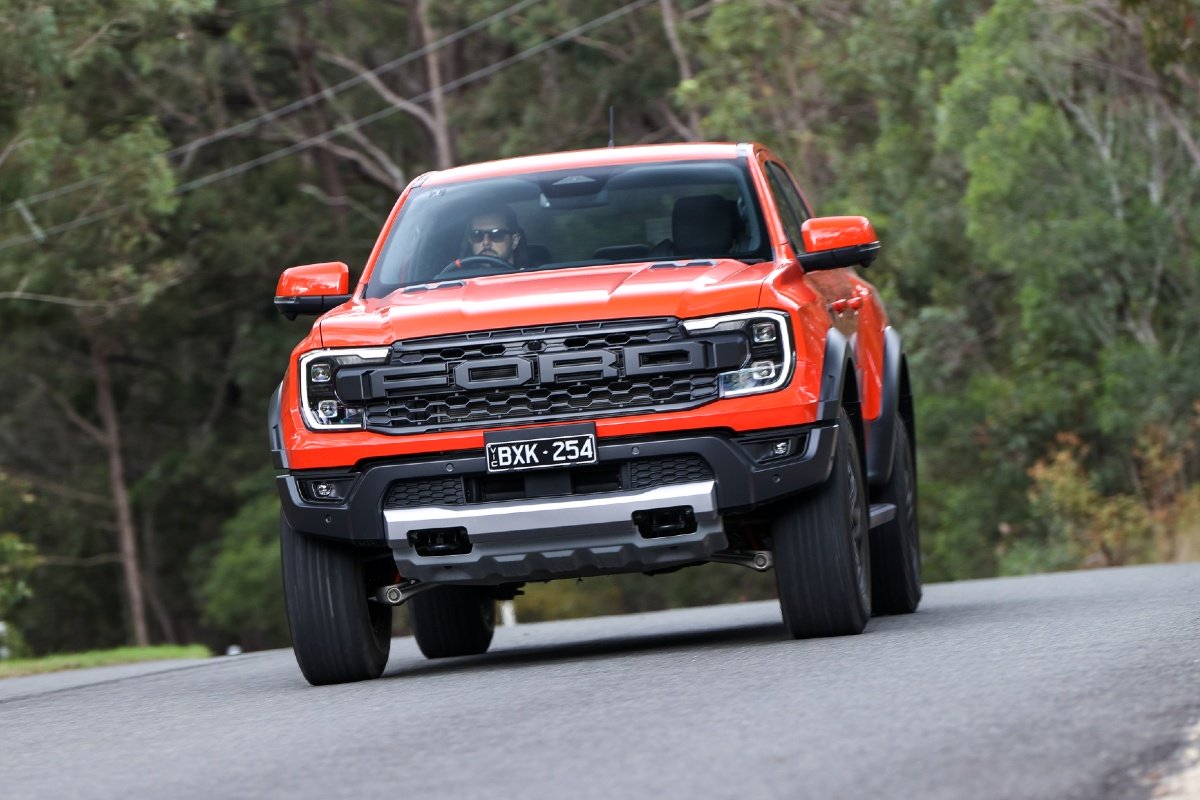
There’s no disputing that the standout headline from the 2023 Australian new vehicle registration data was the Ford Ranger taking out the #1 spot. Not only was the Ranger top dog in the sales charts, but it was also probably right up there in terms of dealer margin per unit as well. It’s one thing just to ‘move metal’, quite another to do so profitably for both the manufacturer and the retailer.
Roll the clock back to 2011 and Ford sold 91,000 vehicles here, of which 17 per cent were Rangers. Last year Ford almost matched that 91k, selling 87,000 units. But a whopping 72 per cent were Rangers. This extraordinary turnaround is totally as a consequence of a decision made many moons ago to develop the T6 Ranger in Australia rather than carry on using the previous Mazda platform. By 2012 the new Ford platform became the basis for the Mazda rather than the other way around.
REVIEW: Ford Ranger Raptor road test
Ford made a much better job of the styling of the Ranger than Mazda did with the BT-50 in most peoples eyes, and that meant that the T6 started to appeal to private (and user chooser businesses) buyers just at a time when the increasingly good driving experience of many pickups, or utes, was starting to broaden the market away from a purely utilitarian base.
As the Ranger model range expanded with the Wildtrak and then the Raptor, other brands tried to roll out similar models. But most missed the mark. So, with the demise of the Holden opposition from the market, plus the lack of inspirational products from some of the traditional Japanese players, Ford has been able to gradually build Ranger sales to the point where it has a 25 per cent share of the total ute market here.
The launch of the second generation T6 Ranger in 2022 has only solidified this base.
Where did Nissan, Mitsubishi and Mazda go? Their combined market share has halved over the last decade or so. The products simply don’t have the appeal in the marketplace, especially with the retail consumer.
READ MORE: Ford Ranger road test review
Only Toyota and Isuzu can hold their heads high in the face of the Ford onslaught. As I’ve said before, the Isuzu business model here is outstanding and their market share has more than doubled in the past ten years. And the HiLux continues to be the gold standard for the real utilitarian end of the spectrum. I bought one myself last year for that reason – I wanted a pure tool that I could rely on for years to come with minimal aggravation. The HiLux reputation is fully justified in my opinion, and it continues to dominate the business sector.

But that’s where Ford have been so smart. Let Toyota sell twice as many units in the 4×2 space and the lower end of the 4×4 sector. By concentrating on the higher margin end user market with the Wildtrak and Raptor, they make far better margins and dominate that area. Toyota might offer the Rogue, but I don’t see many on the road compared with the high end Rangers.
There’s another play happening here as well. Back in 2011, Ford and Holden were collectively selling over 15,000 Falcon and Commodore based utes. Whilst some of these were used some of the time as tools of trade, most weren’t by that stage. They were really Australian built sports cars! And these buyers are now Ranger Raptor buyers, with no real opposition in the marketplace. Not only are they content with a petrol engine (in what is really a diesel sector), but they are also often spending a sack more dollars with the likes of Herrod Performance to replicate what would have been the HSV or FPV experience back in the day.
OFF-ROAD TEST: Ford Ranger Raptor review
Given that the Ranger, plus the Everest (a Ranger with a wagon body), now form almost 90 per cent of Ford Australia sales, it’s imperative that Ford stay on the ball with product development if they’re to stay viable here. In fact, if they believe in their future Ranger/Everest product planning, surely it’s time to drop every other model, Mustang apart, from the local range and streamline the business in the same way that the Isuzu model works here?
Of course, if they’re still drinking the Kool-Aid and envisaging that we’ll only be buying electric vehicles by 2030, then they’ll be in for a rough ride. But the noises increasingly coming out of the wider industry, including Ford, now appear to be rolling back the tide of nonsense that was being pushed upon us a year ago. Even some folk in the European Union are talking about sales of internal combustion engines no longer being phased out in 2035.
So, hats off to Ford for producing a product that matches consumer demand here at the moment. The Ranger has real showroom appeal as well as being highly capable. At the end of the day, success in the car business comes down to product, product, product. Great products that align with the customers wants and desires will always succeed.














Discussion about this post